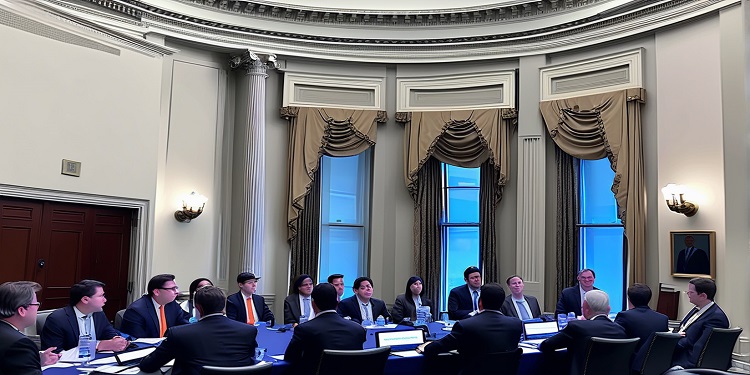A pioneering initiative led by Ripple, in partnership with Mercy Corps Ventures and DIVA Donate, is introducing a blockchain-based aid distribution system in Kenya aimed at supporting communities affected by severe drought. This collaborative effort marks a significant advancement in the use of technology for humanitarian purposes, particularly in arid regions such as Laikipia County.
The pilot project utilizes RLUSD, Ripple’s U.S. dollar-backed stablecoin, to deliver assistance swiftly and transparently. By leveraging blockchain infrastructure and smart contract automation, the program seeks to address the persistent drought conditions that threaten the livelihoods of pastoralist communities in northern Kenya.
Data-Driven Intervention With Automated Delivery
The system functions through a fully automated, data-driven model that eliminates traditional delays in humanitarian response. Using satellite-based observation, particularly the Normalized Difference Vegetation Index (NDVI), the platform continuously monitors vegetation health and density. This data serves as an early indicator of grazing conditions for livestock.
When the NDVI readings fall below a critical threshold—signaling environmental stress and the onset of drought—the system automatically initiates a payout of RLUSD to registered recipients. Approximately $75 in digital currency is distributed to each eligible pastoralist, providing funds sufficient to secure feed and water for one animal over a six-month period. This proactive method ensures that aid reaches affected households before conditions deteriorate further, rather than as a delayed reaction to an escalating crisis.
A total of 533 pastoralists have been enrolled in this initial pilot, covering parts of Laikipia County known for their vulnerability to climate extremes. The project aims to demonstrate the practical effectiveness of stablecoins and blockchain in enhancing the responsiveness and accountability of humanitarian aid systems.
What if aid could be faster, smarter, and more transparent? @Ripple, @MCSocialVenture & @DIVADonate_xyz are piloting blockchain-powered aid—using RLUSD for drought insurance in Kenya: https://t.co/4FXAZYiFQ2
Satellite data detects drought risk
Smart contracts automate…
— Ripple (@Ripple) April 4, 2025
Eliminating Traditional Barriers in Aid Distribution
One of the central benefits of this model lies in the transparency and efficiency of blockchain technology. All transactions are recorded on a public ledger, allowing stakeholders to track fund disbursement and ensuring that resources are allocated as intended. The use of smart contracts removes the need for intermediaries, reducing administrative costs and minimizing opportunities for mismanagement.
This structure directly addresses many longstanding issues associated with conventional aid systems, such as delayed response, bureaucratic overhead, and lack of financial access for marginalized communities. The RLUSD-based approach not only ensures faster deployment of resources but also promotes financial inclusion for rural populations that often lack access to traditional banking services.
Ripple Advances Humanitarian Applications of Blockchain
The pilot in Kenya also serves as a broader demonstration of Ripple’s commitment to global impact through blockchain innovation. Through initiatives like Ripple Impact, the company has been supporting organizations such as Mercy Corps Ventures and CARE in leveraging blockchain technologies for social good. The current effort exemplifies how programmable, secure digital assets can be tailored to meet real-world needs in disaster response and financial aid.
This model could potentially be replicated in other regions affected by environmental crises, signaling a shift in how humanitarian support is conceptualized and delivered. By integrating satellite data with automated, verifiable blockchain mechanisms, Ripple and its partners are helping to shape a more agile and transparent future for global aid efforts.
As this pilot continues, observers are likely to assess its scalability and potential for broader application in crisis management and development programs worldwide.









